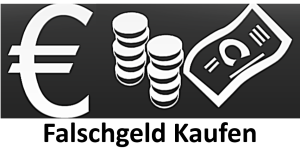
Morris Gormly
The Reality of Euro Counterfeit Money: What You Should Know
In a significantly globalized economy, more people find themselves handling foreign currencies, including Euros. With the increase in worldwide trade and tourist, the incident of counterfeit money has actually likewise surged. This post dives into the complexities surrounding counterfeit Euro currency, offering important insights for anybody associated with currency exchange or financial deals.
Understanding Euro Counterfeit Money
The euro (EUR) is the official currency of the Eurozone, which comprises 19 of the 27 European Union (EU) member countries. While the euro is a steady and widely accepted currency, it has actually not been unsusceptible to forgery. Counterfeit euro notes can be difficult to detect without proper knowledge of the security features incorporated into genuine currency.
Common Security Features of Euro Notes
To fight the growing issue of counterfeit currency, the European Central Bank (ECB) has implemented different security features in euro notes. These functions include:
Watermark: A portrait of Europa, a figure from Greek folklore, can be seen when the note is held against the light.Hologram: A silver stripe on the front of each bill that shows a moving image of the number and the symbol of the euro.Security Thread: A thin, dark stripe that goes through the note, noticeable when held versus the light.Microprinting: Small text that can be seen under a magnifying glass, making it hard to recreate accurately.Color-Shifting Ink: Some denominations include ink that alters color when viewed from different angles.
These security measures are developed to assist the public quickly authenticate authentic banknotes while making it more tough for counterfeiters to be successful.
The Dangers of Buying Counterfeit Money
While a portion of the population might consider obtaining counterfeit money as a fast monetary fix, the risks significantly exceed the perceived benefits. Acquiring counterfeit currency is unlawful and could cause extreme consequences, including:
Criminal Charges: Possessing counterfeit money is a punishable offense in the majority of jurisdictions. Convictions can result in fines, imprisonment, or both.Financial Loss: Buying counterfeit currency typically results in loss of funds, as the illegal notes can not be exchanged for real currency.Economic Impact: Counterfeit money weakens the economy and can lead to increased inflation and a decline in currency worth.Legal Implications
In Europe, the charges for producing or Echte banknoten bestellen dispersing counterfeit currency are stringent. Under EU legislation, counterfeiting is classified as a major criminal offense. An individual discovered guilty of counterfeiting euro notes can face jail time for numerous years, in addition to heavy fines. Countries within the EU collaborate to combat counterfeiting, ensuring that those accountable are hauled into court.
Alternatives to Counterfeit Currency
Those seeking monetary liberty must think about genuine opportunities rather of turning to counterfeit money. Here are some safer options:
Exchange Services: Utilize reputable currency exchange services to obtain euros legally.Bank Transfers: Transfer funds directly through banks to avoid the dangers connected with bring money.Debit/Credit Cards: Most worldwide banks offer cards that permit users to withdraw currency from ATMs worldwide.Digital Currencies: Explore digital wallet services or cryptocurrency options, which can sometimes use more beneficial exchange rates.How to Spot Counterfeit Euro Notes
Awareness is your best defense versus accidentally accepting counterfeit money. Here are key actions to recognize possible fakes:
Feel the Texture: Genuine euro notes are printed on a special polymer material, providing a slightly rough texture. Counterfeit expenses typically feel various or excessively smooth.Examine the Watermark: Hold the note up to the light to validate the watermark exists and recognizable.Examine the Hologram: Tilt the note to see if the hologram shifts images, as it should in authentic currency.Inspect the Security Thread: Look for the embedded security thread, which must be continuous and not just printed on the surface.Try To Find Color-Shifting Features: Pay attention to the color of the ink and whether it alters when seen from numerous angles.Often Asked Questions (FAQs)1. What should I do if I receive counterfeit money?
If you receive suspected counterfeit currency, decline to accept it and report the event to regional authorities. Do not try to invest or pass it on to somebody else.
2. How can I report counterfeit currency?
You can report counterfeit currency to law enforcement agencies or your regional bank. In lots of nations, banks have particular protocols for managing presumed counterfeit notes.
3. Exist reliable techniques to check currency authenticity?
Yes, numerous counterfeit detection gadgets and apps can assist in identifying deceptive currency. Reputable retailers frequently use these tools to analyze bills.
4. Can I get repaid for counterfeit money if I accidentally accepted it?
In many cases, no. Banks usually do not reimburse clients for counterfeit currency, as it is considered the recipient's responsibility to verify currency authenticity.
Understanding euro counterfeit money is essential in this period of global finance. Awareness of the security functions, legal implications, and methods of verification can assist people and businesses secure themselves against the dangers connected with counterfeit currency. Participating in genuine financial practices cultivates financial stability and guarantees the integrity of currencies such as the euro. Avoid the allure of fast gains from counterfeit money and select paths that promote monetary safety and compliance with the law.
In a significantly globalized economy, more people find themselves handling foreign currencies, including Euros. With the increase in worldwide trade and tourist, the incident of counterfeit money has actually likewise surged. This post dives into the complexities surrounding counterfeit Euro currency, offering important insights for anybody associated with currency exchange or financial deals.
Understanding Euro Counterfeit Money
The euro (EUR) is the official currency of the Eurozone, which comprises 19 of the 27 European Union (EU) member countries. While the euro is a steady and widely accepted currency, it has actually not been unsusceptible to forgery. Counterfeit euro notes can be difficult to detect without proper knowledge of the security features incorporated into genuine currency.
Common Security Features of Euro Notes
To fight the growing issue of counterfeit currency, the European Central Bank (ECB) has implemented different security features in euro notes. These functions include:
Watermark: A portrait of Europa, a figure from Greek folklore, can be seen when the note is held against the light.Hologram: A silver stripe on the front of each bill that shows a moving image of the number and the symbol of the euro.Security Thread: A thin, dark stripe that goes through the note, noticeable when held versus the light.Microprinting: Small text that can be seen under a magnifying glass, making it hard to recreate accurately.Color-Shifting Ink: Some denominations include ink that alters color when viewed from different angles.
These security measures are developed to assist the public quickly authenticate authentic banknotes while making it more tough for counterfeiters to be successful.
The Dangers of Buying Counterfeit Money
While a portion of the population might consider obtaining counterfeit money as a fast monetary fix, the risks significantly exceed the perceived benefits. Acquiring counterfeit currency is unlawful and could cause extreme consequences, including:
Criminal Charges: Possessing counterfeit money is a punishable offense in the majority of jurisdictions. Convictions can result in fines, imprisonment, or both.Financial Loss: Buying counterfeit currency typically results in loss of funds, as the illegal notes can not be exchanged for real currency.Economic Impact: Counterfeit money weakens the economy and can lead to increased inflation and a decline in currency worth.Legal Implications
In Europe, the charges for producing or Echte banknoten bestellen dispersing counterfeit currency are stringent. Under EU legislation, counterfeiting is classified as a major criminal offense. An individual discovered guilty of counterfeiting euro notes can face jail time for numerous years, in addition to heavy fines. Countries within the EU collaborate to combat counterfeiting, ensuring that those accountable are hauled into court.
Alternatives to Counterfeit Currency
Those seeking monetary liberty must think about genuine opportunities rather of turning to counterfeit money. Here are some safer options:
Exchange Services: Utilize reputable currency exchange services to obtain euros legally.Bank Transfers: Transfer funds directly through banks to avoid the dangers connected with bring money.Debit/Credit Cards: Most worldwide banks offer cards that permit users to withdraw currency from ATMs worldwide.Digital Currencies: Explore digital wallet services or cryptocurrency options, which can sometimes use more beneficial exchange rates.How to Spot Counterfeit Euro Notes
Awareness is your best defense versus accidentally accepting counterfeit money. Here are key actions to recognize possible fakes:
Feel the Texture: Genuine euro notes are printed on a special polymer material, providing a slightly rough texture. Counterfeit expenses typically feel various or excessively smooth.Examine the Watermark: Hold the note up to the light to validate the watermark exists and recognizable.Examine the Hologram: Tilt the note to see if the hologram shifts images, as it should in authentic currency.Inspect the Security Thread: Look for the embedded security thread, which must be continuous and not just printed on the surface.Try To Find Color-Shifting Features: Pay attention to the color of the ink and whether it alters when seen from numerous angles.Often Asked Questions (FAQs)1. What should I do if I receive counterfeit money?
If you receive suspected counterfeit currency, decline to accept it and report the event to regional authorities. Do not try to invest or pass it on to somebody else.
2. How can I report counterfeit currency?
You can report counterfeit currency to law enforcement agencies or your regional bank. In lots of nations, banks have particular protocols for managing presumed counterfeit notes.
3. Exist reliable techniques to check currency authenticity?
Yes, numerous counterfeit detection gadgets and apps can assist in identifying deceptive currency. Reputable retailers frequently use these tools to analyze bills.
4. Can I get repaid for counterfeit money if I accidentally accepted it?
In many cases, no. Banks usually do not reimburse clients for counterfeit currency, as it is considered the recipient's responsibility to verify currency authenticity.
Understanding euro counterfeit money is essential in this period of global finance. Awareness of the security functions, legal implications, and methods of verification can assist people and businesses secure themselves against the dangers connected with counterfeit currency. Participating in genuine financial practices cultivates financial stability and guarantees the integrity of currencies such as the euro. Avoid the allure of fast gains from counterfeit money and select paths that promote monetary safety and compliance with the law.
Made By Tag To Connect
 Italian
Italian
 हिन्दी
हिन्दी
 Arabic
Arabic
 Chinese
Chinese
 English
English
 French
French
 German
German
 Portuguese
Portuguese
 Russian
Russian
 Spanish
Spanish
 Turkish
Turkish
 Vietnamese
Vietnamese
